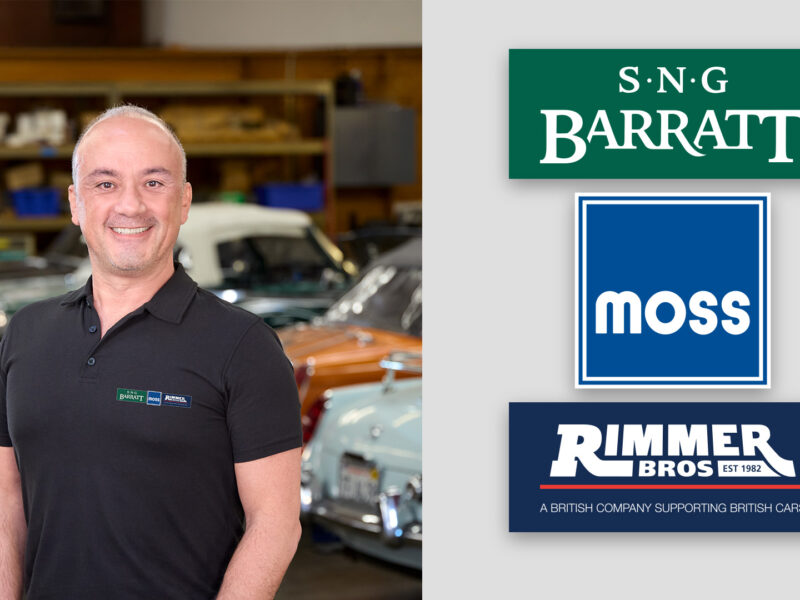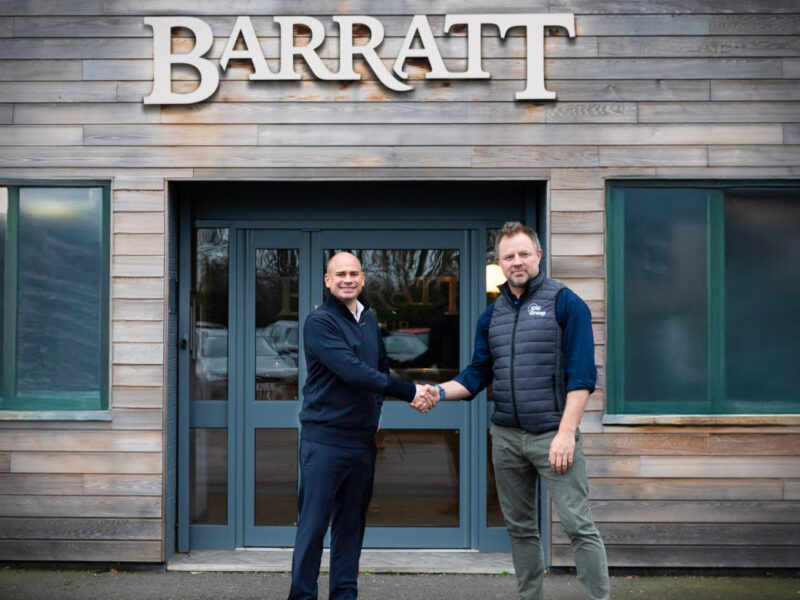By Rick Feibusch
These cheap and cheerful little roadsters were the mainstays of entry-level sportscar ownership for decades as well as fierce little battlers on the racetrack. They still can be seen as viable contenders in contemporary SCCA sportscar racing as well as very capable and competitive vintage racecars.
This guide will concentrate on the later Sprites and their MG badge-engineered brother, the MG Midget. The original “Bugeye” Sprite models have become timeless, priceless icons of their era in England and can command well over $25,000 for a really nice one with an interesting story on a good day at the auction. The very similar later-model cars are probably the best value in all of car collecting because they possess all of the same engineering found in the icon at a third the price.
The Basic “Bugeye” Sprite
These little roadsters were developed in the 1950s as the once-basic and reasonably priced MGs, Porsches, and Triumphs had become bigger, more powerful, better appointed, and considerably more expensive.
Seeing a hole in the market, BMC management had Donald Healey apply the same magic that he used to create the impressive “Big Healeys” and brew up an inexpensive and basic, sporting roadster out of their economy-car parts bins. Using a twin-SU version of the 948cc A-series engine (as found under the bonnets of Austin A35s and Morris Minors); Minor rack & pinion steering; and Austin front suspension, rearend, and 13” wheels, the Bugeye was born!
The body was simple and pleasing in proportion. The bonnet presented a cheerful little smiling face that everyone loved. While no powerhouse, it did provide all of the exhilaration of driving a proper English sportscar for the price of a Volkswagen. It was all about the image one wanted to project: devil-may-care, landed gentry or coffee-house campaigner—“Could you be a good man and hand me my ascot?”
The MkII and Beyond
After the Bugeye, the Sprites and their new badge-engineered brother, the MG Midget (1961), started adding upgrades, power, and better brakes. Each year, the senior MG, Healey, and Triumph models were fitted with upgraded features such as roll-up windows and collapsible tops (rather than snap-on and removable). As the years went on, the Spridgets would get the same.
The Sprite name was lost in about 1970 when importers became sure that there would be no Austin-Healey 3000 replacement. The Austin-Healey name was dropped and all of the entry-level sportsters became MG Midgets.
In mid-1974, the design had to be completely reworked to comply with U.S. smog and safety laws. Fitted with a highly smogged 1500cc Triumph powertrain, a catalytic converter, and big rubber bumpers, this government-spec-inspired compromise would remain one of the only convertibles available in the U.S. market until the early 1980s. These cars are now referred to as “Spitfidgets.”
Internet Response
I went to the Autox.team.net lists to find out what owners had to say about these cars. While the cars are a bit different from year to year, the value seems to be based on condition, upgrades, and the quality of modifications and the fit and finish. There are people who prefer the “old school” sidecurtains and “erector set” tops and others who swear by the 1967 model because it has all of the good stuff like a 1275cc engine and disc brakes, yet no smog or safety add-ons.
David Lieb wrote that he was only interested in the 1972-74 models with the rounded rear-wheel arches: “I happen to like them, and this restricts the amount of temptation to pick up more that won’t fit in the garage. I would not turn down a Bugeye, but I try to avoid being tempted.” These were a two-year car because the larger round opening had to be replaced with the original-style smaller “square” arches for more strength when the “crash bumpers” were fitted in 1974.
Why Buy a Spridget?
People bought these cars for various reasons. Some said that their cars followed them home like a stray dog. Mike Deikis from Chelsea, Michigan, said, “It collected me!” Bill Gilroy from Monroe Township, New Jersey, commented, “Someone gave me a free car. One of the most expensive things you can ever get is a ‘free’ car.”
Others got in because of the low price. Perry French states, “They are cheap and I can fit three in one side of the garage! Mike C. from Michigan said, “I wanted a little British car and ended up with the first one that I liked and could afford, a ’70 Midget.”
Economic issues aside, nostalgia or extenuating circumstances are just two reasons to acquire a Spridget. “I bought my first one in 1963,” says Mark Endicot from Nashville, Tennessee, “and promptly ran it under the rear end of an Oldsmobile. Even though I only had it for a short time, I never forgot how much fun it was to drive and toss around on Indiana backroads.”
Brad Fornal had commercial intent: “I bought my first Midget to make some money off of it, but once I got it running, it was too damn fun to drive. I still have it! I also have three Sprites!” And Rick Lindsay needed real transportation: “I realized that I couldn’t, in any reasonable time unit, complete my 1970 Lotus Europa project car. So I traded it for a running, driving, and cosmetically restored ’76 Midget.”
Biff Jones just lucked out: “I was looking for a Bugeye but found an original MkII with only 1,412 miles on it. Couldn’t pass it up! Besides, it’s the same as a Bugeye with new bodywork.” David Riker better understood what he was looking for: “I wanted a sportscar that was affordable, nimble, and that I could repair myself.”
Right he was! These cars are simply built and easy to repair. Most parts are interchangeable from year to year, so many of the running upgrades like the 1275cc engines and disc brakes just bolt into place. A number of bolt-in upgrades like disc brakes and Datsun 5-speed overdrive gearboxes have been developed and are reasonably available for these cars.
Some consider these as little toys, something less than “real” cars. Kim Tonry of Downers Grove, Illinois, disagrees: “I bought my ’79 Midget in 1981, two years out of college, and didn’t have enough work or credit history to buy an MGB LE in late-1980. Eight months later, this Midget showed up on the dealer’s used lot and I bought it. I’ve driven it all over. I’m in Chicago and have driven it to the East Coast (NYC and Boston in ’82), the West Coast (San Francisco and L.A. in ’83), the Gulf Coast, the North, and many other places as well. It now has 112,000 miles on it. I’ve rebuilt the engine, trans, and front suspension. It is a ball to drive. I have had several MGBs and an MGA as well. The Midget is a very different driving experience. Very responsive. Feels faster than it is. Way high on the driving enjoyment quotient.”
And as for the small size, Rick Lindsay says, “Like Doctor Who’s TARDIS, the Midget is larger on the inside than on the out! The only different ‘feel’ when seated in the car comes from the upright seating position with the steering wheel in one’s lap. And that is the ideal position for a rally car as it positions the driver’s arms in their strongest orientation.” Kate from Elko, Nevada, ponders, “This has both good and bad aspects. The good is that I never am asked to carry a large group of people or cargo. The bad is people in anything larger that are unable to see it.”
Bad Points To Consider
These cars are very small—not quite the thing for aging baby-boomers. Try one out for size before falling in love. John Deikis states, “It is so small that if you and your passenger both have take-out coffee, only one person can drink at a time.” Mike C. from Michigan reminds us, “It’s very small, but I was surprised that it actually has more cabin room and trunk space than a ’95 convertible Corvette. Less leg room, though.”
Most readers responding talked of rust. These cars are of unit construction, so look for serious rust and poorly repaired body damage. Frank Clarici from Toms River, New Jersey, has a rust-belt tolerance for some of these repairs: “Most rust is fixable unless the metal is gone. Floors are a common rust area but easy to fix, as are the sills and lower fenders and quarters.” David Lieb warns, “Always check the frame rails where they go past the engine. Spridgets pioneered the ‘crumple zone,’ although they might not have meant to; any front end accident will generally kill these rails, and they do not unbolt.”
Kim Tonry cautions, “The 1500 Midget has a tendency to run hot. It can get uncomfortable in the car on highway runs in hot weather, with the heater and heater vents employed to cool the engine into the acceptable range all the while wilting the driver. Even rougher on the passenger who has the exhaust under their floor.”
Comments On Values
There are three distinct categories of Sprites and Midgets. The Bugeyes are, by far, worth the most—about twice the value of the later-series cars. A real nice Bugeye can be picked up for about $12,000, but we have seen superb cars with asking prices in the $25,000-$30,000 range. A car like this would be a totally stock, frame-up, professionally restoration, done on a perfect, rust-free car.
The post-Bugeye, BMC badge-engineered cars are mostly all worth about the same. Their value is more dependent on condition, restoration quality, and extras than the year of manufacture. There doesn’t really seem to be much of a premium for originality on these cars if the work is done well. In fact, a mechanically updated, chrome-bumpered Spridget will often be worth more than a proper original.
Tips From Present Owners
Mark Endicott states, “Buy the best car you can afford. You see a lot of them for sale that say, ‘$20K spent on restoration, sacrifice for only $6,500.’ Believe it! We’d all love a Bugeye, but remember that ugly is only skin-deep. I like the 1967-74 with the bigger engine, roll-up windows, and a top that keeps at least some of the rain off you.”
Perry French says to try to find one with later-model (1275) running gear. Gerard Chateauvieux from San Francisco advises, “If you’re smart, buy one that someone has already done all the hard work and spent all the money fixing. It’s much cheaper (though possibly less fun for the do-it-yourselfer) to buy one someone else has emptied their wallet on. One that your wife will like, so you don’t end up sleeping in it.”










'British Value Guide: A-H Sprite/MG Midget' has no comments
Be the first to comment this post!